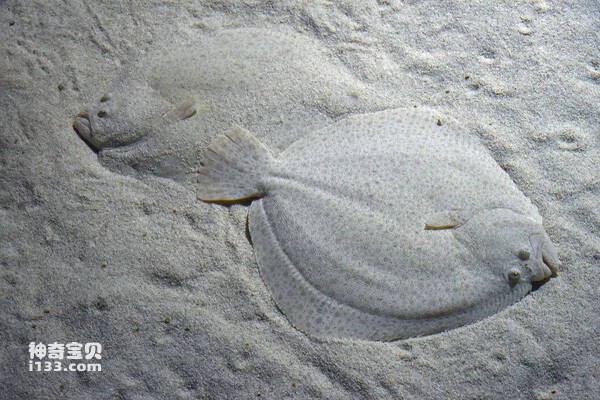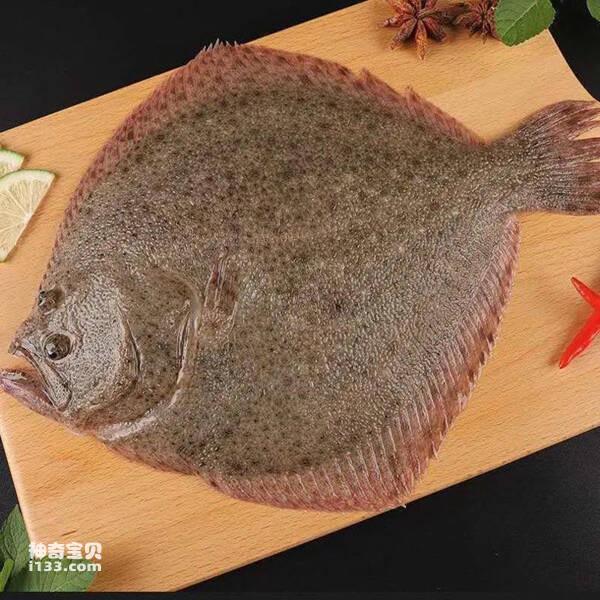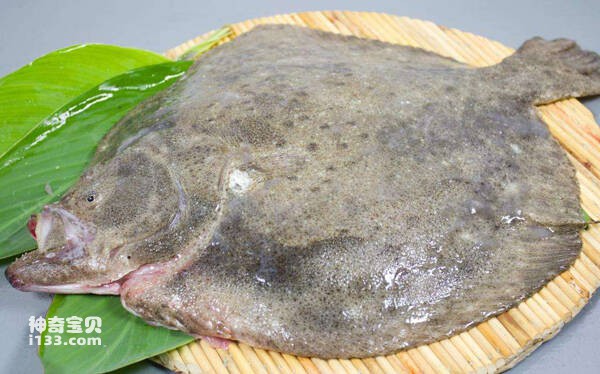Flounder is a general term for fishes of the order Plaice. It has no swim bladder and feeds on worms, crustaceans and other animals. Taxonomically it belongs to the class Actinopterygii, Pleuronichthys. The flatfish has a flat body with eyes that grow on only one side of the body, a unique asymmetrical structure among fish.

The flounder is thought to have evolved from a basically symmetrical perk-like fish (sea bass) that habitually rested on one side. There are about 570 species of flounder in the world, which can be divided into 11 families. The most primitive family of flatfish is Psettodes, which have pectoral and anal fins very similar to sea bass, with only the eyes and long dorsal fins different from sea bass, indicating that the flatfish evolved from the ancestors of perciformes.
The word "flounder", in the existing ancient books, was first seen in "Erya". Erya is the first comprehensive dictionary arranged according to the meaning class in China, and is the ancestor of Chinese exegesis. Its "interpretation of the ground" cloud: "There is a flounder in the east, no less, its name is called flounder." There are "five directions" in the book, which refers to five strange things: Eastern flounder, southern wingbird, Western beast, northern man, and central Poncirus snake. Later generations believe that the bizarre objects of the five sides are mostly legends, not real things. The first draft of Erya was completed at the end of the Warring States period, the beginning of the Qin Dynasty and the beginning of the Western Han Dynasty. The record of flounder is roughly the rumor before the Qin and Han Dynasties.
All adult flounder are bottom fish, but their eggs contain oil droplets that float near the surface. The eggs hatch a few days later, and the hatchlings are symmetrical in shape, with two eyes on one side of the head and a mouth on the midline, further suggesting that they evolved from percoids. When the young fish grow to about 1 centimeter long, they undergo deformation changes, which have a great effect on the symmetrical skull, and eventually form the asymmetric flounder we see. The whole change begins with one eye moving to the opposite side of the fish's head, which is done through the reabsorption of strips of cartilage on the skull. The nostril is also moved to the side with two eyes or to the side with color. With the exception of Psettodes, the mouths of flatfish of other families move to the same plane as the eyes. The pattern of eye movement is also typical of some special families. Fish such as homophores and homophores are called "left-eyed flounders" because their right eye usually moves so that the colored side of the body that ends up facing up is the left side. Flounders are "right-eyed flounders" because their left eye usually moves and ends up with the right side up. The number of right-eyed and left-eyed flounders in the family is the same

When these dramatic changes occur, the young fish sink to the bottom. Flounders do not have swim bladders, so they remain in a position where they lie on or near the bottom of the sea with their eyeless side facing down. The body shape of adult flounders varies - the European halibut and its relatives are nearly equal in width and length; The sole (Cynoglossus), on the other hand, is long and narrow. The sole usually hides itself by striking sand or wriggling through its body, leaving only its eyes and upper gill covers exposed. The gill cavity is connected to the outside world by a special channel. Water is inhaled from the mouth through the gill lid, and the exhaled water is discharged to the body through a special channel in the gill cavity on the buried side.
The colored side of many flounder fish is predominantly tan, and they often have orange spots and patches that allow them to blend in with the color of the seafloor. The flounder is the master of camouflage among fish. It can change its color to match the color of the sea floor. When placed on a grid base plate, some species can re-change the color of the body into the color of the grid with reasonable accuracy. All flatfish are carnivorous, but the way they catch their prey is different. Arnoglosses hunt other fish during the day, swimming nimbly behind their prey with excellent eyesight. Soles and glossoles (Soleidae) of the family Soleidae hunt mollusks and silkworms at night, relying primarily on their sense of smell to detect their prey. Flounders of these families have innervated fibrous junctions rather than fish scales on the eyeless side of their heads, which enhance their ability to smell. Some species, such as halibut, follow their prey nimbly, while others, such as sole, rely on their keen sense of smell and dexterity to hunt silkworm and crustaceans.

The vast majority of flounder species live in the ocean, but there are some species that can live in fresh water. European flounder often migrate from the sea to the river to feed, and can travel up the river as far as 65 km inland in the summer, returning to the ocean to spawn when autumn arrives. The brown sole is a freshwater fish that is usually raised in aquariums. Its body surface area and weight ratio is very large, can stretch its body to float on the water. They can also "stick" to the walls of rocks or aquarium tanks by creating a vacuum between the underside of the body and the underwater surface.
Many flatfish such as sole, flounder, and halibut are used as food fish, and some species are of considerable commercial importance. Flounder's special structure is perfect for cooking: they cook quickly and evenly, their bones are easy to remove, and they can be easily filleted. Fresh halibut is a valuable edible fish, its meat is fresh and tender, fish bones are less, steamed, braised are very suitable, generally will be made into cans. Its liver can also be extracted from cod liver oil.
Protect wild animals and eliminate wild meat.
Maintaining ecological balance is everyone's responsibility!